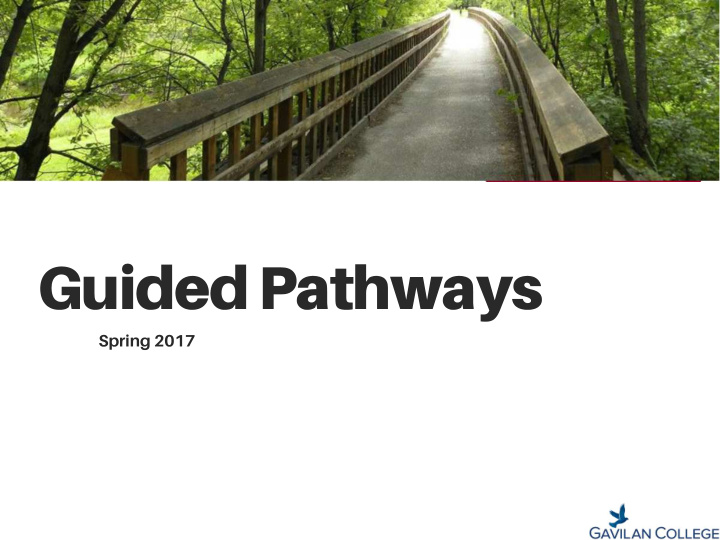



Guided Pathways Spring 2017
https://www.gavilan.edu/schedule/PDF/IGETC_Requirements.pdf
What are Guided Pathways?
https://www.gavilan.edu/schedule/PDF/IGETC_Requirements.pdf
With guided pathways, Georgia State University (33,000 undergraduates) dramatically improved its six-year graduation rate from 32% in 2003 to 54% in 2014 while increasing enrollment of traditionally underserved students from 31% to 58% http://www.sr.ithaka.org/publications/buildingapathwaytostudentsuccessatgeorgiastateuniversity/
No single initiative is responsible for the dramatic gains at GSU; the university’s improvement represents the accumulated impact of a dozen or more relatively modest programs.
http://www.sr.ithaka.org/publications/buildingapathwaytostudentsuccessatgeorgiastateuniversity/
https://www.bakersfieldcollege.edu/sites/bakersfieldcollege.edu/files/SSSC_Pathways_Workshop_10.07.16.pdf
https://www.bakersfieldcollege.edu/sites/bakersfieldcollege.edu/files/SSSC_Pathways_Workshop_10.07.16.pdf
What are program maps or meta-majors? Metamajors are categories of interest designed to help students focus on academic pathways aligned with intended careers and transfer programs.
http://ccrc.tc.columbia.edu/
http://ccrc.tc.columbia.edu/
Pathways Work
Three Design Principles 1. Colleges' program redesigns must pay attention to the entire student experience, rather than to just one segment of it (such as developmental education or the intake process)
Alignment 2. A Guided Pathways redesign is not the next in a long line of discrete reforms, but rather a framework or general model that helps unify a variety of reform elements around the central goal of helping students choose, enter, and complete a program of study aligned with students' goals for employment and further education.
Backwards Design 3. The redesign process starts with student end goals for careers and further education in mind and 'backward maps' programs and supports to ensure that students are prepared to thrive in employment and education at the next level.
Year 1: Engagement Make Case for Change Broadly Engage Faculty and Staff in scrutinizing current practice, planning redesign Constantly Communicate Vision and Goals
In-Depth Planning Year 2: Initial Implementation Map Pathways for Largest Programs Plan Redesign of Intake System, Including Dev Ed, into Program 'On-Ramp' Train Advisors and Faculty for Implementation
Initial Scale Year 3: Implementation Begin Scale Implementation of: Redesigned Pathways for Largest Programs Reorganized Intake System Program Advising System Training to Support Initial Implemention
Improved Scale Year 4: Implementation Refine and Expand Continue Training Formative Evaluation Broad Communication and Engagement
Year 5: Scale Implementation Institutionalize Structures and Processes for Formative Evaluation and Improvement
Pathways Opportunities for Gavilan • Form Leadership Team (Pathways FIG) • Leverage grant and district resources to begin integrated planning and redesign process • Consider working with Career Ladders Project to facilitate pathways planning (currently working with Skyline and Hartnell Colleges) • California Promise Grant Initiative Grant Application: $750,000 to develop pathways for future educators from high school to Gavilan and transfer
Reflections • What about the guided pathways approach excites you? • What are we currently doing that a guided pathways effort might build on? What were your main takeaways from today?
Moving Forward What questions do you still have about guided pathways? What kinds of professional learning do we need to engage in to move ahead with pathways exploration? What are you going to take back to your department or constituents? What are our next steps?
Resources Gavilan's Guided Pathways Website Redesigning America's Community Colleges 10 copies in the Library available for check-out
Recommend
More recommend